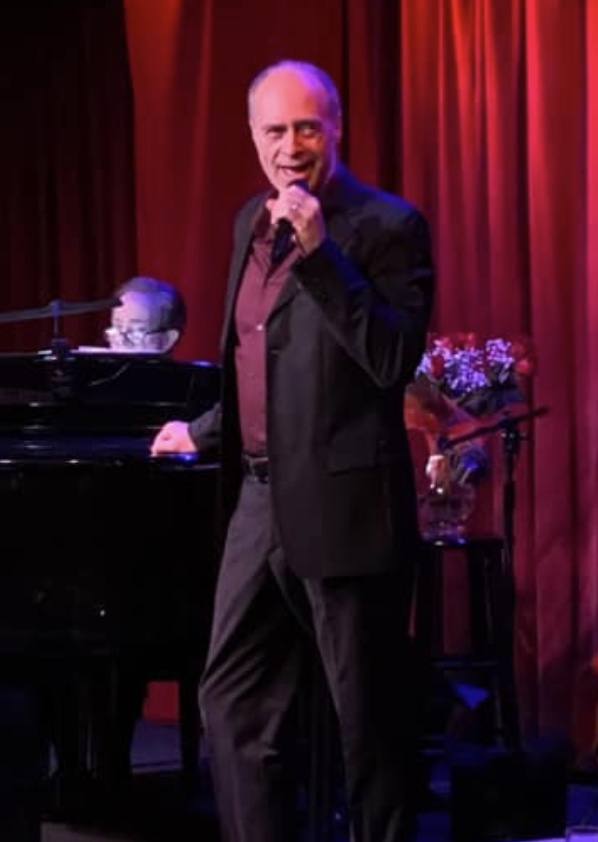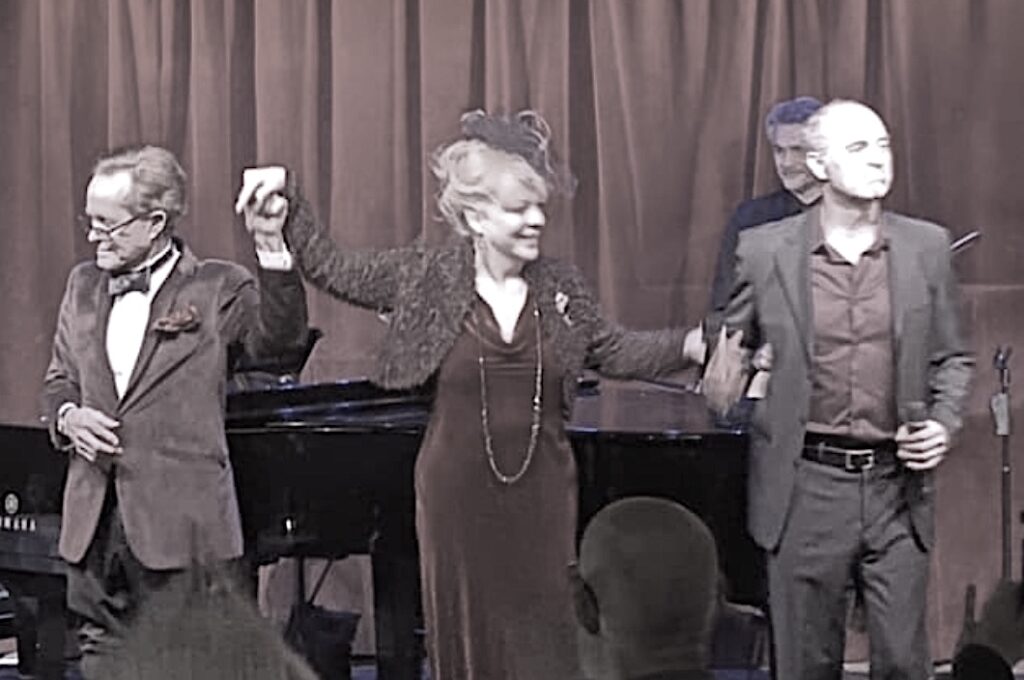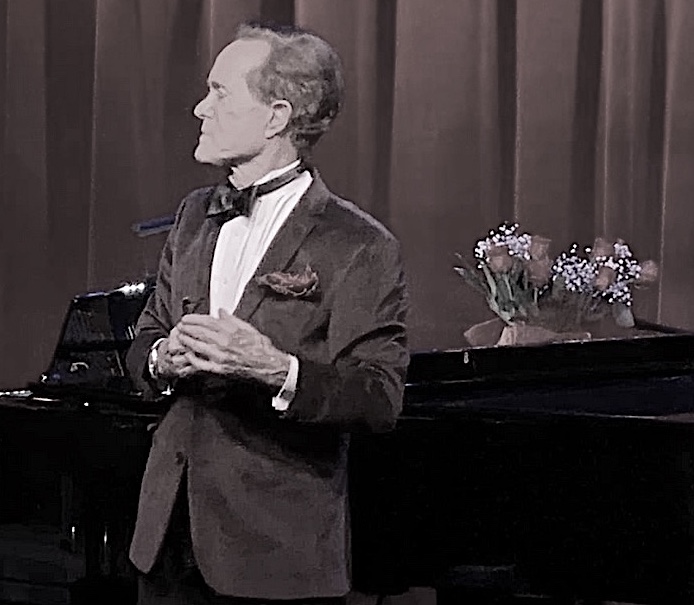By Marilyn Lester . . .
It was Valentine’s Eve and time for the start of Falling in Love…Again at Birdland Jazz Club.As the dapper Crown Prince of Cabaret, Steve Ross, welcomed a packed house of friends and fans, the vibe in the room was already electric. This was a crowd that had already fallen in love with Ross again, and again, and was prepared to do it one more time.
Unfolding like a Valentine rose, Falling in Love…Again proved a tour de force journey in song about all the many aspects of love. After all, the ancient Greeks had at least eight words for love, from eros (romantic love) to agape (all-embracing love) and everything in-between. A bright medley of tunes launched the evening, with what Ross does so very well, and that is set up each number with interesting backstories, delivered with wit and sophisticated erudition. He declared, for instance, that the waltz tempo, 3/4 time, is pretty much the standard for love songs. Rodgers and Hart’s “Wait till You See Her” served as an example, leading into three more R&H numbers about compatibility. Of course, Irving Berlin, a master of the love ballad, was liberally represented, including one of his most staunch declarations of love, “Always.”

Joining Ross for most of the program, cellist Peter Sachon provided the kind of musical texture that is a never-fail for his instrument. His cello was particularly haunting on a very early American love ballad, “Why No One to Love?” a now little-remembered 1862 work of the prolific melodist Stephen Foster—the Berlin of his time. Many interpretations of Foster material today are via operatic soloists, so it was refreshing to hear Ross sing the lovely tune with a modern sensibility. Another very old love ballad was delivered in duet by Ross and guest artist Jean Brassard, singing in French Jean-Paul-Égide Martini’s 1784 work, “Plaisir d’amour.” The melody in modern translation is “Can’t Help Falling in Love,” a mega-hit for Elvis Presley in 1961—proving that music, like love, is eternal.
Brassard also sang one of his staples (and a definitive version of) Jacque Brel’s “Madeleine,” hitting all the notes (literally and figuratively) of its rich irony and whimsy. Holding a single flower, Brassard’s interpretation magnificently conveyed the story arc of one hopelessly in love but perpetually optimistic. Ross’ other guest artist, KT Sullivan, also offered a snippet in French among Songbook standards, but it was with a tune from Noel Coward’s 1963 book musical, Sail Away, that the duet of “The Bronxville Darby and Joan” brought down the house. Only Coward could excel at such sweet, deadly sarcasm in the hilarious lyric, and only a couple of sophisticates as Sullivan and Ross could make a meal of it.


The sublime richness of Falling in Love…Again began to come to an end with a piano-only medley of Showboat numbers (Jerome Kern, Oscar Hammerstein II) from “Make Believe” to “Bill” to the powerful “Old Man River.” Not only was this mini-overture an example of Ross’ luxurious, orchestral piano style, but deeply stirring to an audience that knew well the power of the piece and its historic place among Broadway musicals. Therein followed a high-spirited flow of standards with the audience both spontaneously and encouraged to sing along with standards such as “”Let’s Face the Music and Dance” (Irving Berlin) and “I Can’t Give You Anything But Love” (Jimmy McHugh, Dorothy Fields), with Sullivan and Brassard returning to the stage to help lead the songfest. Falling in Love…Again was a magical moment in time, with Ross never more relaxed or on top of his game. It was the kind of night that folks will remember for a long time to come.
Photos: Ari Silverstein


















